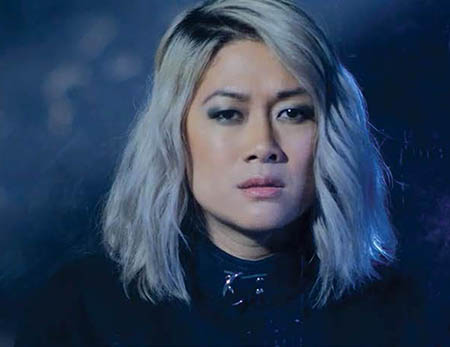Lighting and the Camera—Getting It Right
One mark of a good cinematographer is someone who truly understands how to utilize both the capabilities of their camera and their lights together. When it comes to making choices with exposure, it is important to remember how the settings on your camera will affect the overall exposure of the image you are capturing. I wanted to touch a little on the camera, despite this being a regular lighting column, because both camera and lighting have to work together—the better they work together, the better your work will be.

Vocalist and songwriter MILCK in the music video “Quiet”
EXPOSURE CHOICES
Several aspects of both film and digital camera systems affect exposure—the sensor’s or film’s native ISO, the aperture on the lens, the shutter speed and the framerate. What demonstrates skill is being able to make choices with each of these, rather than dialing through settings just to brighten up the image on the monitor because you “think” it is too dark. All of these characteristics on your imaging device affect how it sees the world.
When shooting in slow motion for example, light is lost automatically, and the cinematographer is going to have to compensate. Rather than boosting the ISO or even opening up, the way to compensate would be through lighting. We understand that if you are outside running around in the sun and shooting slow motion, you cannot adjust your lighting necessarily if you are without tools. When you have the tools and the time, lighting is the way to go.
The point is that the way you light a scene will always be married to what your camera is set to. Unfortunately, I’ve seen a lot of people go into a scene by lighting it and then taking a look at their camera and asking what they should set it to in order to best see what they lit.
Nowadays, everyone can see the monitor, so it is tempting to just open up the aperture to brighten up the dark image on the screen that someone is so afraid of. Ideally, your camera qualities come first, as these are all creative choices. You go into a shoot knowing these before the camera is even built. These then dictate how much light you throw in.
SHOOTING AT GLASS
I recently shoot the music video “Quiet” for Los Angeles-based vocalist and songwriter MILCK. The music video can be seen here on YouTube: www.youtube.com/watch?v=JCnexOFOxCo.
This was a project that called for a specific camera/lighting combo. We had to shoot for visual effects, avoid reflections, utilize practical lighting effects and light for different framerates, all in one day.
Almost every shot for the video involved shooting at glass. Not only did we circle around a large glass tank with two cameras, but we also captured close-ups of glass shards flying and breaking, and had to somehow show the entire tank breaking when we could not do it practically for safety reasons.
Even before the tank breaks, MILCK sings at 100fps and 60fps. Instead of changing something on the camera to compensate for the light loss, we took our preset scrims from the three lights we used throughout the video and walked them in accordingly. We also had to shoot close shots of glass shards breaking at 300fps, and so brought in more light to maintain the overall look. This saved time and kept us from changing the way the camera was seeing the space.
Despite all we were attempting to achieve, all we needed to fly were two 2K Mole LEDs—one as a key and one as a backlight—and one Leko. Flickering on and off the overhead fluorescents also helped us achieve practical effects and transition us into the next part of the song.
Finally, in order to get the glass breaking in a wide shot, we had to light an empty plate of the tank, MILCK against green-screen and a miniature of the tank against black that broke. All of these were carefully lit under similar conditions as the entire piece. Then the three shots were combined into a successful VFX shot.
“Quiet” was an extremely fun challenge that involved many different aspects of lighting, in a somewhat simple setting. Always go into a shoot knowing what you need from your camera system. And never let your lighting force you to sacrifice those needs, but always meet them in the best way possible.
Julia Swain is a cinematographer based in California. She shoots on a variety of formats, seeking to create compelling visuals for every story and brand. She can be contacted through TV Technology.
Get the TV Tech Newsletter
The professional video industry's #1 source for news, trends and product and tech information. Sign up below.
